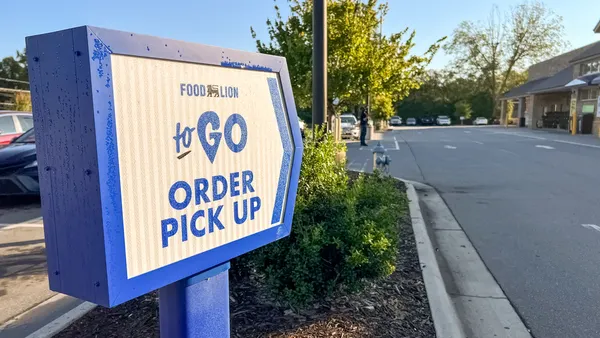Dive Brief:
- At least 18 new grocery stores are expected to be soon approved for the online purchasing pilot of the Supplemental Nutrition Assistance Program (SNAP), a program run by the U.S. Department of Agriculture’s Food and Nutrition Service (FNS), according to an emailed press release Monday from the USDA.
- Included in the latest expansion of the SNAP pilot are a number of small, independent and regional stores across the South and Midwest — a category of grocers that faced barriers to their participation in the pilot program. The announcement also noted that Carlie C’s in North Carolina recently launched SNAP online purchasing, bringing the current total of participating retailers listed on the SNAP online purchasing website to six.
- Along with the broadened access to SNAP’s online grocery purchasing program, the USDA announced the online debut of the Special Supplemental Nutrition Program for Women, Infants, and Children (WIC). The Nebraska-based Gretchen Swanson Center for Nutrition will develop a secure online ordering model for WIC with the aid of a $2.5 million grant from FNS.
Dive Insight:
The latest update from the USDA is a positive sign for independent grocers, indicating moves to expedite the approval process for retailers, which is one of the key recommendations laid out by the National Grocers Association. The expanded access is particularly crucial as applications for food stamps have soared since March.
Alabama's Piggly Wiggly, Texas' Spring Markets and Illinois' Supermercados El Guero are among the grocers aiming to join the SNAP online ordering expansion. H-E-B in Texas and Safeway in Washington are also included.
The online ordering program, which has rapidly expanded to more and more states since the onset of the coronavirus pandemic in March, aims to make groceries more accessible.
Still, independent grocers face more hurdles to their participation in the SNAP online pilot than many national chains, according to the National Grocers Association. These barriers, which include financial constraints, a lengthy application process and individualized testing for each store location, have meant that Walmart and Amazon have dominated the pilot program in the 46 participating states and Washington, D.C. since its launch in April 2019.
To overcome these constraints, some grocers are taking payment at the point of pickup rather than online to serve users of SNAP Electronic Benefit Transfer (EBT) cards without undertaking the online processing involved. The third-party delivery app Instacart, in partnership with discount grocer Aldi, has also adjusted its systems to allow online EBT payments for same-day grocery delivery and pickup in certain markets.
Inexpensive transportation, volunteer-run food banks and nonprofit groceries are potential solutions to bridging the food access gap. But a particularly promising solution is food delivery services coordinating with existing programs like SNAP to address the acceleration of food deserts caused by urban sprawl and sparsely populated areas where full-service grocery stores can’t turn a profit.
In addition, some grocers have taken other steps to broaden access to their stores for low-income shoppers, such as Amazon, which has offered discounted Prime membership to recipients of federal aid since 2017.












